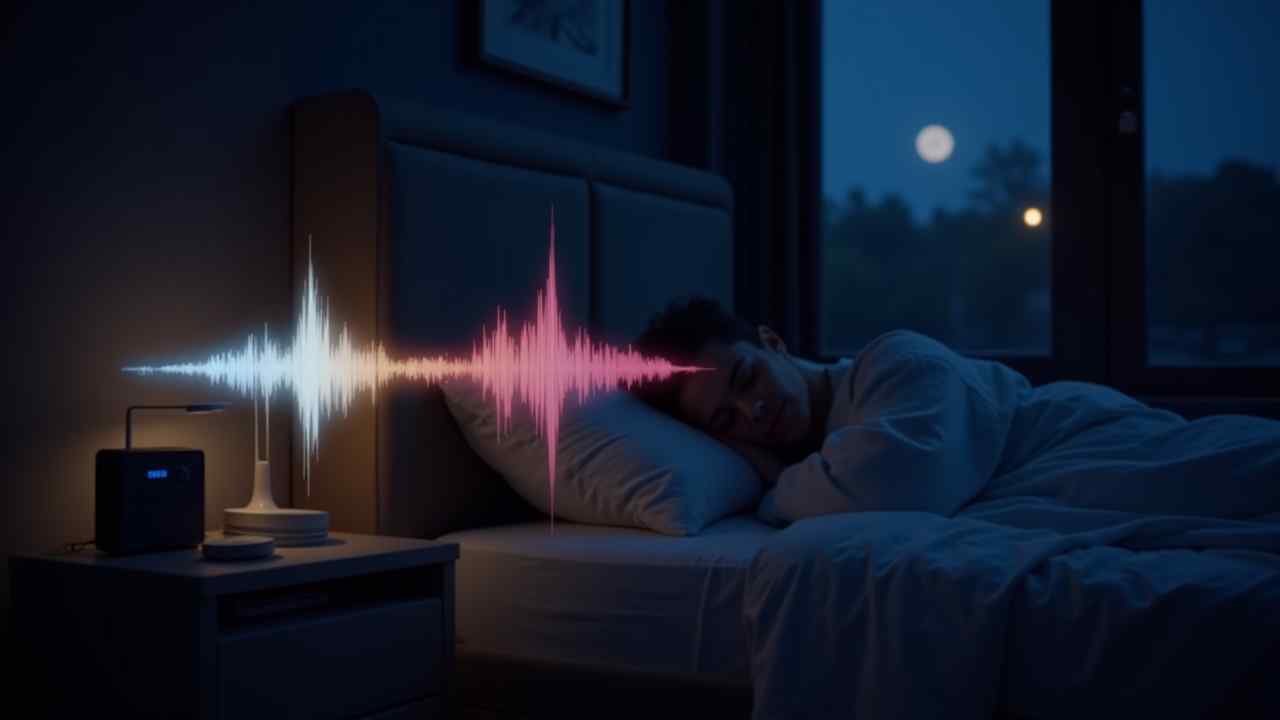
🌙 What Color Noise is Best for Sleep? (White vs. Pink vs. Brown)
🌙 What Color Noise is Best for Sleep? (White vs. Pink vs. Brown Noise) 🌙
For many people, a quiet room is not the key to a good night's sleep. Unpredictable sounds like a barking dog or a passing car can easily jolt you awake. This is why many turn to a consistent, ambient sound to create a peaceful environment. This is often called "white noise."
But did you know that there are actually different "colors" of noise? Each one has a unique sound profile and can affect your sleep differently. This leads to an important question: what color noise is best for sleep?
This guide will explain the differences between the three most popular colors. We will cover white, pink, and brown noise. This will help you find the perfect sound for a deep and restful night. Let's listen in. 🔊
🤔 What Exactly is "Colored Noise"?
The term "colored noise" is an analogy to the colors of light. White light is a combination of all the different colors (frequencies) of light. Similarly, white noise is a sound that contains all the frequencies the human ear can hear, played at once.
The different "colors" of noise—like white, pink, and brown—are defined by how the energy is distributed across these frequencies. This is what makes each one sound different. Some are higher-pitched, and some are much deeper.
🤍 What is White Noise?
White noise is the most well-known type. In white noise, the energy is distributed equally across all frequencies. This means the high frequencies are just as powerful as the low ones.
What it sounds like: A hissing radiator, a whirring fan, or television static. It has a distinct high-pitched quality.
What it is good for: It is a fantastic sound-masker. Because it covers all frequencies, it is very effective at blocking out other noises. However, some people find the high frequencies to be a bit harsh or jarring to listen to for a long time.
🩷 What is Pink Noise?
Pink noise is often considered a more balanced and natural sound than white noise. In pink noise, the energy is stronger in the lower frequencies and weaker in the higher ones. This mimics many sounds found in nature.
What it sounds like: A steady, gentle rainfall, the wind rustling through trees, or a soft waterfall. It is a smoother and deeper sound than white noise.
What it is good for: Many sleep experts believe that pink noise is best for sleep. Some studies have suggested that its steady, soothing sound can help to promote more stable, deep sleep. It is less abrasive than white noise.
🤎 What is Brown Noise (or Brownian Noise)?
Brown noise is the deepest and most rumbling of the three. The energy in brown noise drops off even more dramatically in the higher frequencies. This gives it a very strong, bass-heavy sound.
What it sounds like: The powerful roar of a strong waterfall, a rushing river, or a low thunder rumble. It is a very deep and grounding sound.
What it is good for: It has become extremely popular for sleep and focus. Many people find its deep, low tone to be incredibly calming and soothing. It is excellent for those who find even pink noise to be too high-pitched.
⭐ So, What Color Noise is Best for Sleep?
When you ask, "what color noise is best for sleep?," there is no single right answer for everyone. However, based on the evidence and popular opinion, we can draw some conclusions.
Many sleep experts are leaning towards pink noise as the most beneficial for sleep quality. Its natural sound is very easy for the brain to listen to.
However, the most important factor is your personal preference. The best sleep sound is the one that you find the most relaxing. It should be a sound that effectively masks external noises without being distracting itself. Try listening to samples of each online. Your ears will tell you which is the best fit for your perfect night's sleep. 😴